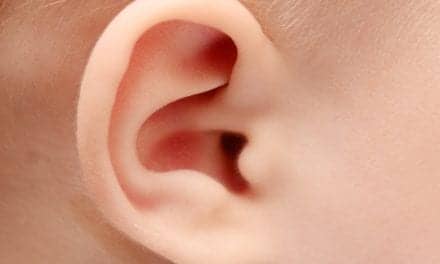Scientists at Helmholtz Zentrum München, Bavaria, Germany have developed a new mouse model that can be associated with deafness.
They say that with the model, they have succeeded for the first time in showing that microRNA, a new class of genes, influences hearing loss. The respective microRNA seed region influences the production of sensory hair cells in the inner ear, both in the mouse and in humans. The findings have been published ahead of print in the current online issue of Nature Genetics. The study represents a major step forward in elucidating the common phenomenon of progressive hearing loss, opening up new avenues for treatment.
Scientists of Helmholtz Zentrum München, led by Professor Martin Hrabé de Angelis, director of the Institute of Experimental Genetics, have developed a new mouse model with a genetic mutant in which a single base of a specific microRNA seed region has been altered. Mice carrying this miR-96 mutation suffer progressive hearing loss as they get older. Moreover, if they carry two of these mutants, their sensory hair cells are impaired from birth on.
A number of genes associated with hearing loss were already known. "However, we were very surprised when with our new mouse model we discovered this new class of genes—microRNA—as genetic cause for this clinical picture," says Dr Helmut Fuchs, who conceived the idea of this mouse model and who is scientific-technical head of the German Mouse Clinic at the facility.
The new mouse model is called diminuendo, named after the term in music theory meaning "becoming gradually softer." The mice were bred using the ENU method, in which the male mice are administered N-ethyl-N-nitrosurea (ENU), thus influencing the DNA of their sperm. Successor generations develop dominant or recessive mutations. Using methods like these, de Angelis and his colleagues in the German Mouse Clinic can thus identify mutants that develop diseases similar to human diseases. They made the diminuendo mouse model available to colleagues of the Wellcome Trust Sanger Institute in Cambridge, UK (to view that story, posted previously on HRs site, click here), who—based on specific characterizations—ultimately found the association with the miR-96 mutation.
The German Deaf Association (Deutscher Schwerhörigenbund) estimates that in Germany alone, some 13 million people have impaired hearing.
"We assume that our mouse model will be of far-reaching significance for the development of treatment strategies against genetically caused progressive hearing loss in humans," Fuchs says. Colleagues from Spain confirm his assumption. They have already performed first examinations on patients diagnosed with progressive hearing loss. In them the microRNA cluster Mirn96 was mutated in the same seed region as in the mouse model. Now, with the aid of this mouse model, the international research consortium hopes to identify factors that are necessary for long-term survival of hair cells and thus to find new approaches for treatment of progressive hearing loss.
Original Publication: Lewis M et al. An ENU-induced mutation of miR-96 associated with progressive hearing loss in mice. Nature Genetics online. http://dx.doi.org/10.1038/ng.369
[Source: Helmholtz Zentrum München, German Research Center for Environmental Health]




